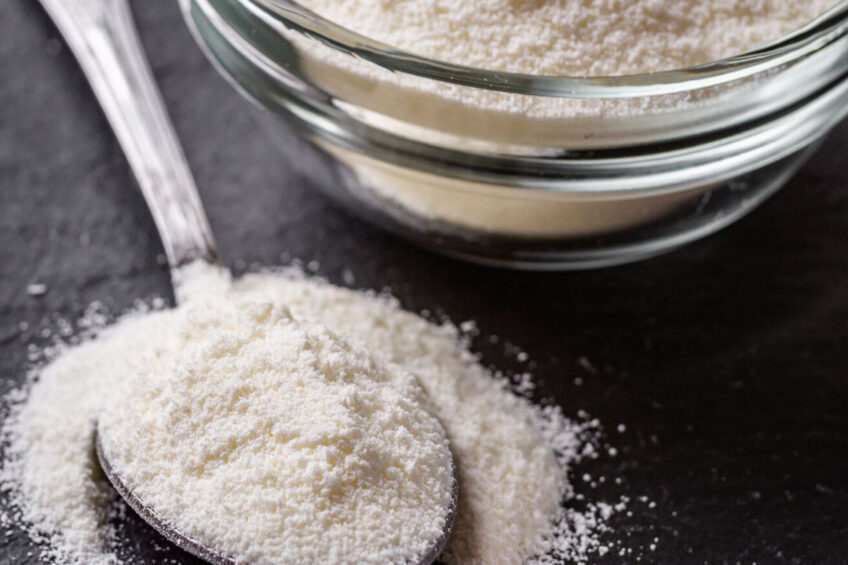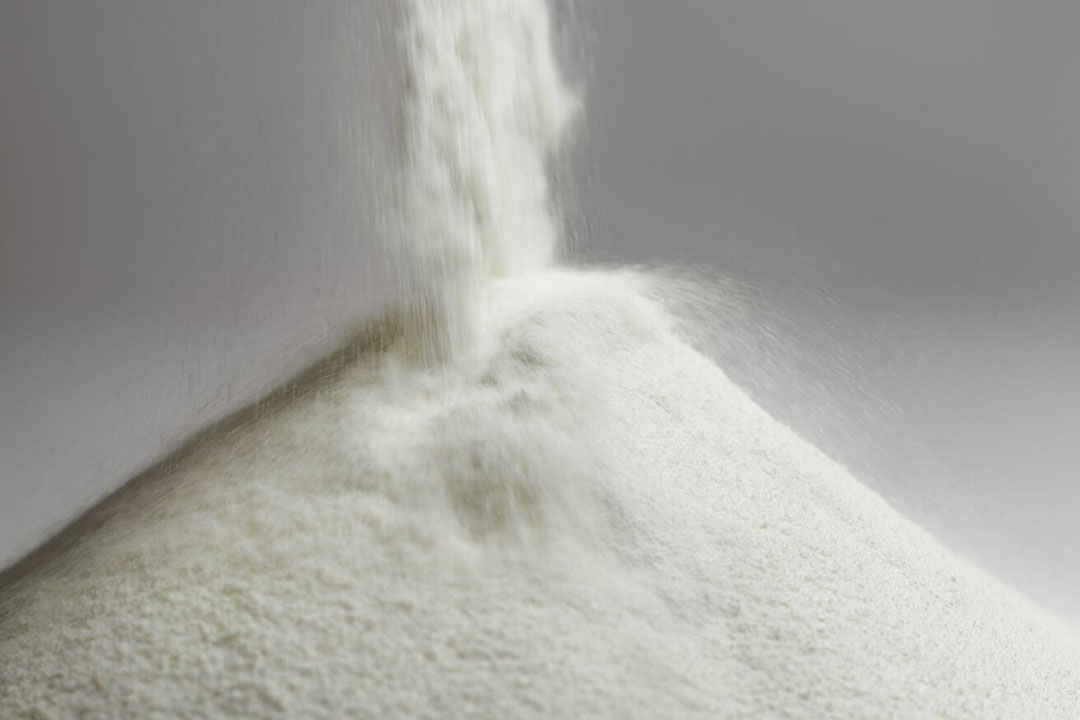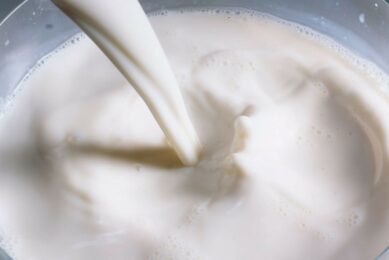Milk powder quality and storage conditions

In recently published research, researchers identify the influence of various factors related to industrial storage (temperature, height or layer number, storage time) on the quality and technological properties of skimmed milk powder and whole milk powder.
Research findings on the storage stability of milk powder mainly focus on storage conditions at above-zero temperatures. Yet there are few studies that consider the load factor when milk powder is stored in bags on a pallet.
In this study, researchers used skimmed and whole milk powder samples from various manufacturers. The samples were sealed and stored on a storage simulator (“mini-pallet”) for 18 months at –(30 ± 1)°C, (6 ± 1)°C and (25 ± 3)°C and at 40-80% relative humidity to simulate actual industrial storage conditions.
The samples were sealed in Ziploc airtight bags made of food-grade HDPD, 10x14x2 cm, 80 µm density, 0.5 g/m2 and 24 h water vapour permeability. The bags were stacked in 5 layers of 3 bags each to simulate common industrial arrangements on pallets. At the same time, the empty layers between the bag layers were simulated by 2.4 kg weights to make a total of 10 layers (the 10th layer being the bottom-most layer of bags). The samples were analysed every 3 months. The reference samples were packed and stored under similar conditions but with no load applied.
Moisture and water activity
The moisture content and water activity (aw) are associated with the main changes in milk powder. In this study, the moisture content in the samples did not exceed the recommended 5%, while water activity values were consistent with the results reported by previous research. Neither the moisture content nor the water activity (aw) changed over the 18 months of storage.
“Although previous studies have shown increases in moisture content, we believe there were no significant changes in moisture content and water activity due to a closed, sealed environment without ambient air humidity fluctuations,” said the researchers.
Clumping
It should be noted that clumping in amorphous powders with a moisture content of less than 5% is undesirable as further agglomeration causes sticking and caking with the formation of poorly soluble agglomerates; all this hampers subsequent milk powder processing.
In this study, particle size distribution changes during storage were observed for both skim milk powder (SMP) and whole milk powder (WMP), but the presence of clumps was characteristic only of WMP samples.

Particle size
It is generally accepted that structural changes in milk powder occur as the humidity increases. However, in the current study, the moisture content did not rise, and therefore the researchers suggested that the load applied to milk powder significantly boosts clumping and changes the particle size distribution.
A more significant effect of the combination of temperature and load on particle size distribution changes during storage was found with the whole milk powder than the skimmed milk powder; for skimmed milk powder the influence on particle size distribution was only apparent at the lowest layer (layer 10) and the highest temperature (25 ± 3)°C.
At the same time, the changes in the product structure were associated with the mass fraction of fat; the number and size of clumps increase with increasing mass fraction of fat. This probably occurs due to the formation of free (surface) fat, which increases the cohesion of the particles, thereby contributing to lower flowability of the powder observed in the high-fat whole milk powder compared to skimmed milk powder.
Titratable acidity
Titratable acidity is a characteristic of a product indicating the amount of acid residues in it. High acidity values indicate low product quality. The initial acidity of the samples was 0.154 and 0.156% in terms of lactic acid content for skimmed powder and whole milk powder, respectively. Its increase during storage mostly depended on the temperature and milk powder type.
Significant increases in titratable acidity were observed at the highest temperature (25 ± 3)°C for both skimmed and whole milk powder and occurred after 12 months of storage for whole milk powder and after 15 months of storage for skimmed milk powder. However, both changes were within the recommended values. Previous studies attribute these changes to the possible growth of psychrophilic and thermophilic microorganisms, the formation of free fatty acids, the oxidation of fats and the reaction of glucose with proteins and phospholipids.
The wetting angle (θ) between the surfaces of the powder and the water drop is an indicator of milk powder wettability. As a rule, smaller θ values correspond to higher wettability, while larger θ values correspond to lower wettability. The results confirmed that milk powder particles with a fat (a hydrophobic component) (whole milk powder) on their surface have lower wettability and higher θ than particles with a hygroscopic surface (skimmed powder) and lower θ.
Solubility and heat stability
Solubility is an important functional property of milk powder. It is known that solubility mostly depends on the composition, nature, and structure of proteins. The results of the current study showed significant changes in milk powder solubility after 15 months of storage; only when temperatures were above 0°C for the whole milk powder but for skimmed milk powder, at both the lowest temperature –(30 ± 1)°C and the highest temperature (25 ± 3)°C there were critical solubility changes in the bottom-most layer (layer 10).
Overall, the additional factor of the pallet layer number showed that the greatest change occurred in samples of both milk powder types at layer 10 and at (25 ± 3)°C. The changes were attributed to the differences in milk powders in their ability to lose native properties of proteins with temperature increase or decrease, and storage time.
The results of the study showed that whole milk powder and skimmed milk powder samples had similar patterns of heat stability decline with temperature; given the observed decreases in solubility, a similar decrease in heat stability confirms the protein phase degradation with temperature and storage time.
Conclusion
The data obtained in this study confirms the possibility of storing milk powder at –(30 ± 1)°C and (25 ± 3)°C for 18 months without any weight load applied. At the same time, the industrial storage simulation revealed that at –(30± 1)°C the location or application of weight on the product on the pallet is not essential. At (25 ± 3)°C, the location and mass fraction of fat significantly affect milk powder quality. The first significant signs of product quality loss are observed after 15 months of storage for both skimmed and whole milk powder.
Join 13,000+ subscribers
Subscribe to our newsletter to stay updated about all the need-to-know content in the dairy sector, two times a week.










